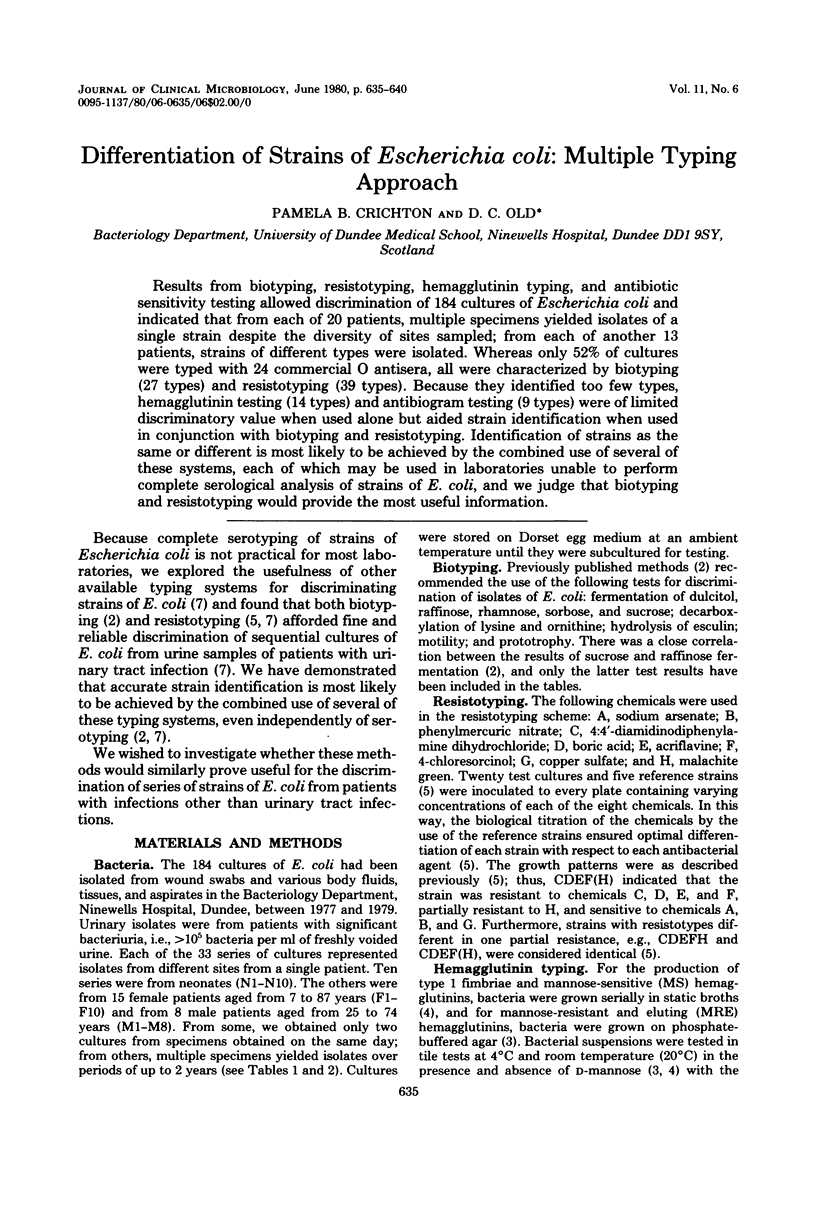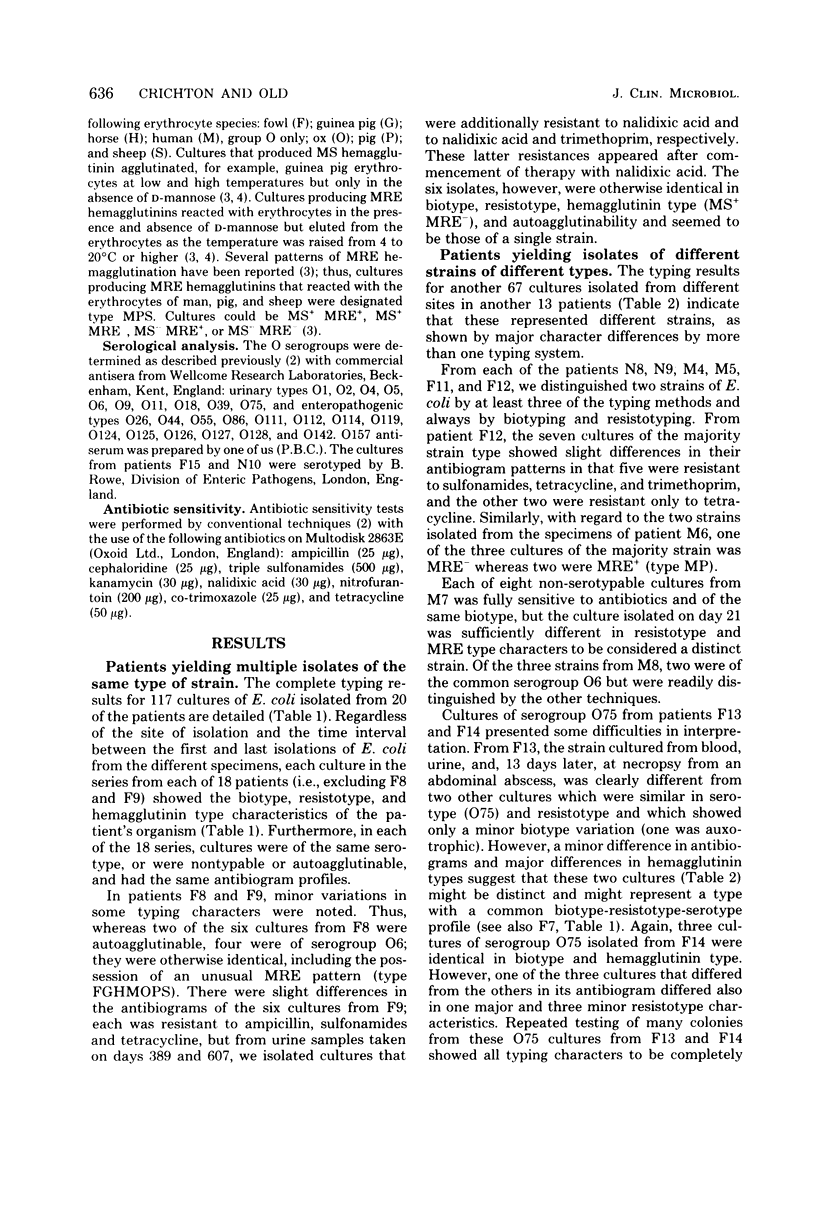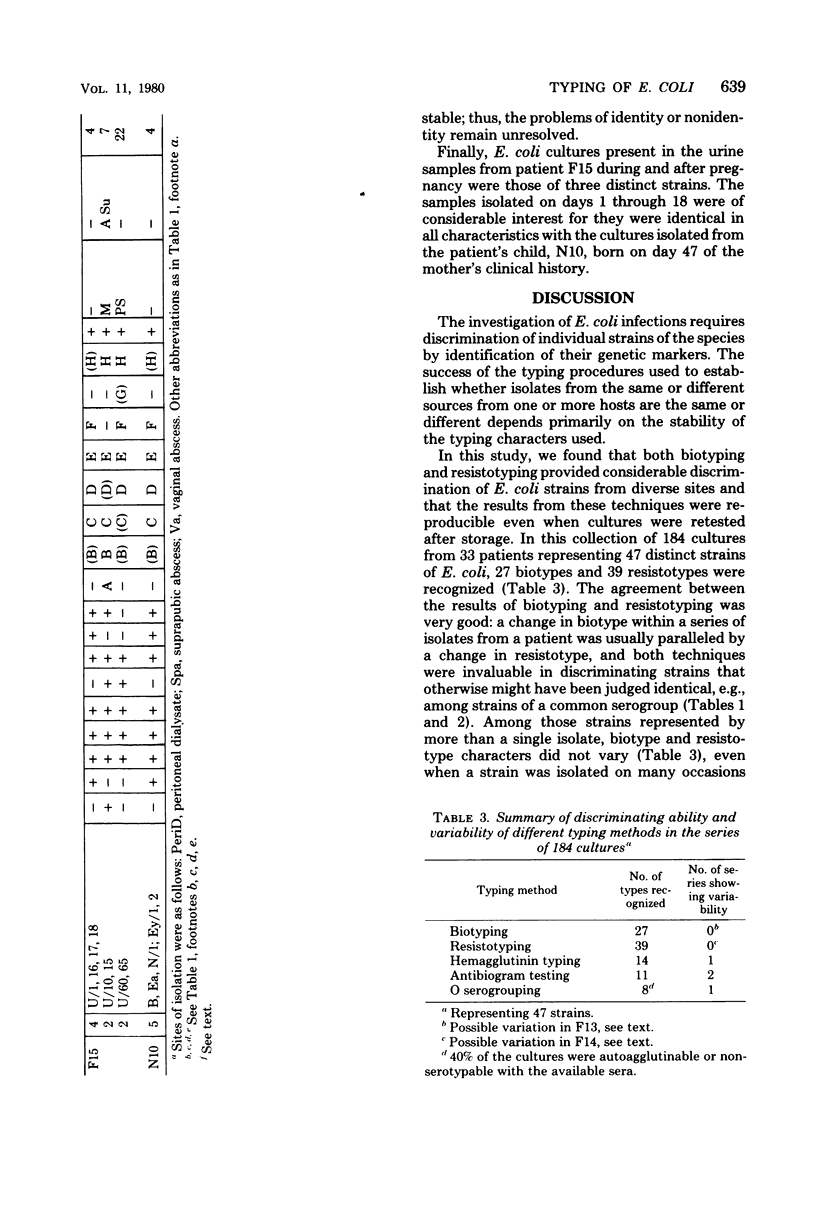Abstract
Results from biotyping, resistotyping, hemagglutinin typing, and antibiotic sensitivity testing allowed discrimination of 184 cultures of Escherichia coli and indicated that from each of 20 patients, multiple specimens yielded isolates of a single strain despite the diversity of sites sampled; from each of another 13 patients, strains of different types were isolated. Whereas only 52% of cultures were typed with 24 commerical O antisera, all were characterized by biotyping (27 types) and resistotyping (39 types). Because they identified too few types, hemagglutinin testing (14 types) and antibiogram testing (9 types) were of limited discriminatory value when used alone but aided strain identification when used in conjunction with biotyping and resistotyping. Identification of strains as the same or different is most likely to be achieved by the combined use of several of these systems, each of which may be used in laboratories unable to perform complete serological analysis of strains of E. coli, and we judge that biotyping and resistotyping would provide the most useful information.
Full text
PDF





Selected References
These references are in PubMed. This may not be the complete list of references from this article.
- Bettelheim K. A., Taylor J. A study of Escherichia coli isolated from chronic urinary infection. J Med Microbiol. 1969 Aug;2(3):225–236. doi: 10.1099/00222615-2-3-225. [DOI] [PubMed] [Google Scholar]
- Crichton P. B., Old D. C. Biotyping of Escherichia coli. J Med Microbiol. 1979 Nov;12(4):473–486. doi: 10.1099/00222615-12-4-473. [DOI] [PubMed] [Google Scholar]
- DUGUID J. P., SMITH I. W., DEMPSTER G., EDMUNDS P. N. Non-flagellar filamentous appendages (fimbriae) and haemagglutinating activity in Bacterium coli. J Pathol Bacteriol. 1955 Oct;70(2):335–348. doi: 10.1002/path.1700700210. [DOI] [PubMed] [Google Scholar]
- Duguid J. P., Clegg S., Wilson M. I. The fimbrial and non-fimbrial haemagglutinins of Escherichia coli. J Med Microbiol. 1979 May;12(2):213–227. doi: 10.1099/00222615-12-2-213. [DOI] [PubMed] [Google Scholar]
- Elek S. D., Higney L. Resistogram typing--a new epidemiological tool: application to Escherichia coli. J Med Microbiol. 1970 Feb;3(1):103–110. doi: 10.1099/00222615-3-1-103. [DOI] [PubMed] [Google Scholar]
- Elek S. D., Moryson C. Resistotyping of Staphylococcus aureus. J Med Microbiol. 1974 May;7(2):237–249. doi: 10.1099/00222615-7-2-237. [DOI] [PubMed] [Google Scholar]
- Old D. C., Crichton P. B., Maunder A. J., Wilson M. I. Discrimination of urinary strains of Escherichia coli by five typing methods. J Med Microbiol. 1980 Aug;13(3):437–444. doi: 10.1099/00222615-13-3-437. [DOI] [PubMed] [Google Scholar]
- Summers A. O., Silver S. Microbial transformations of metals. Annu Rev Microbiol. 1978;32:637–672. doi: 10.1146/annurev.mi.32.100178.003225. [DOI] [PubMed] [Google Scholar]


